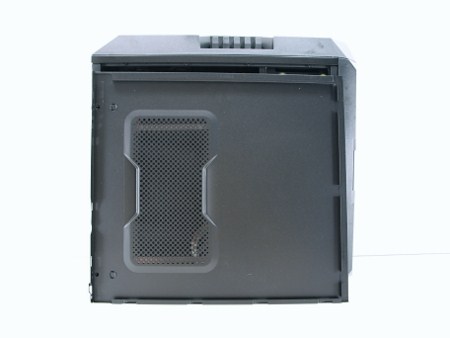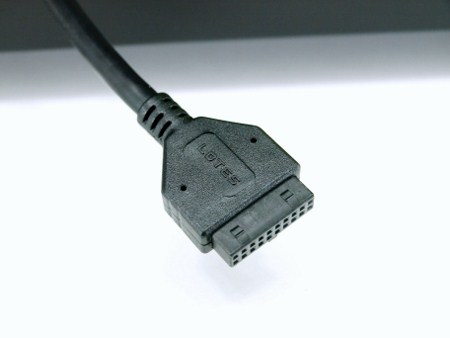INTRODUCTION

The market may be filled with all sorts of PC cases ment to cover pretty much the taste of every user out there but for good or bad we haven't really seen many new PC Cases lately (somewhat weird considering that Computex is just around the corner) and the few that have been released have yet to attract (for reasons unknown to me) the media spotlights most do. So it really goes without saying that we decided to gather as many of these newly released PC cases we could in order to bring them to your attention. In-Win may not be the most familiar brand name around but thanks to their high quality and quite innovative products they have managed to win a large market share in a very small period of time which is not a small feat. Today with us we have one of their latest midi towers, the BUC 101.
IN-WIN Development Inc., an ISO 9001 manufacturer of professional computer chassis, power supplies and digital storage devices, is one of the leading providers of enclosure solutions to system integrators worldwide. Founded in 1986, IN-WIN provides high quality chassis that conform to all safety regulations, as well as unsurpassed customer service. In Win was well trained to become a top-notch manufacturer of core technology to enhance internal core competence to meet what customer and market needs constantly. Top management has been executed four major elements to reach their growing goal: Innovation, Service, Speed, Value, Safety, Warmth, Faithful, and Diligence in order to remain our leading edge position and differentiate with other players.
The BUC 101 follows the same path as its predecessors since it's basically a high quality midi tower with plenty of features and a very nice design at a very attractive price point. Specifically the BUC 101 comes ready with all the latest features such as a top HDD docking station, USB 3.0 mainboard support, room for up to 5 fans (2 of which have easy access hatches), tool-less design and finally space for even the longest mGPU cards in the market. On paper however most products seem flawless and quite impressive so it's our job to see if that's really the case and since many say that a picture is worth 1000 words it's time to move on with the rest of the review.
SPECIFICATIONS AND FEATURES

PACKAGING AND CONTENTS
At the front of the box you will see a large product image as the background, the product name and the main features of the unit listed at the lower end.
The specifications of the BUC 101 are placed at the left side.
Moving at the right side we see a list with the features of the unit.
A picture showing part of the top end of the BUC 101 is present at the rear of the box.
The BUC 101 is placed between two foam spacers and is also wrapped inside a plastic bag.
Aside the user's manual which is placed in the box there's also a small cardboard box placed inside the BUC 101 with 8 cable ties, two 3pin to Molex power connectors (for the fans), an extra PCI rear shield, the usual mainboard speaker and 2 small pouches with all the necessary installation screws.
THE BUC 101 EXTERIOR
Unlike the original BUC the BUC 101 has many edges resulting in a more aggressive (and better for my taste) design. The entire case comes in black matte color and is made by SECC steel (don't know how thick exactly).
As usual the BUC 101 has a grill over at the right side with room for up to 2 extra 120mm intake fans.
What's a bit impressive is that the air filter is actually magnetic and so you can remove and clean it with ease.
Thanks to the aggressive lines the front of the BUC 101 looks quite rugged (reminds me of a truck).
Perforated covers are placed on all three 5.25" drive bays.
The In-Win logo is placed right between the 5.25" trays and the 1.44" FDD tray.
The external 1.44 floppy drive is placed behind this hatch, just push it and it opens (of course you can use that bay with an internal 3.5" drive).
Around the 1.44" drive bay In-Win has placed the reset button along with the HDD activity LED (orange stripe) and the on/off power button right above the power LED (blue stripe).
Moving to the lower front section of the tower we see the front I/O (2xUSB 2.0 ports, audio mini-jacks) and yet another hatch.
This hatch is completely removable giving you access to the front 120mm intake fan and its air filter.
Moving at the top we see the SATA port (docking station) and a large (convenient) storage tray covered with anti-slide material.
Right next to the tray area we see two USB 3.0 ports and the HDD eject button.
At the rear top end we find yet another hatch behind which is the top 120mm exhaust fan with its air filter.
The rear of the BUC 101 comes with the same black matte color.
Two rubber grommets for water cooling applications and a 120mm exhaust fan are placed at the rear top of the tower.
As usual we see 7 expansion slots, all of which have large holes for improved airflow.
The PSU spot is placed at the lower rear end much like with most cases today.
At the bottom we see two tall round feet and a removable air-filter.
What i really like with some cases made by In-Win is that their side panels are actually held in place with clips and not thumbscrews. True they may not be as durable but they sure are convenient.
THE BUC 101 INTERIOR
Both side panels come without any kind of noise-absorbing coating.
Although the BUC 101 is a midi tower case the interior (just like its predecessor) has plenty of space for pretty much anything you want to install.
All four 5.25" drive bays inside the case (you can only use the three top with optical drives) feature a very practical tool-less mechanism.
Even the 1.44 FDD (3.5") bay comes with the same mechanism.
A total of five 3.5" drive trays are present inside the BUC 101 with the top labeled as system (labeling your primary drive may come in handy).
The trays are quite solid although they could be slightly better.
The mainboard tray features a total of 5 cable management holes and a very large cut out used to easily swap CPU cooler backplates.
USB 3.0 mainboard connectors have pretty much become standard with PC Cases lately.
A plain 120mm exhaust fan (once again without any kind of protective grill) is placed at the rear.
All 7 expansion slots feature both a nice tool-less mechanism and extra holes which you can also use with plain screws.
Moving at the lower rear as you can see the power supply unit sits on a metal stripe at one side and two rubber feet on the other.
The top 120mm exhaust fan is primarily accessible from the top of the BUC 101.
BUILDING THE SYSTEM
As always in this section our only goal is to showcase the available interior space of the tower and to build a fully working system. We could always run benchmarks but with most cases coming without all the possible fans installed we just feel it wouldn't make much sense.
Our classic ASRock ATX form mainboard was used (as always) and as you can see there's plenty of space left so you could try to squeeze an eATX mainboard in there (7 slot one).
You can use pretty much any CPU Cooler you wish regardless of height just as long as you don't mount the top 120mm side fan.
Same goes for long graphics cards since you can install even the latest GeForce GTX 590 by NVIDIA.
The BUC also has room for just about the largest PSU you can use although i do recommend a modular one.
CONCLUSION

If i was to compare the original BUC with the BUC 101 i'd say that the new version is improved in some areas and not quite as good in others. More specifically although the new BUC 101 features a nice magnetic filter on the side it lacks the small door through which you could easily access the 3 hot-swap drive bays. The design of fascia is far more aggressive, offers easier access to the front 120mm fan and its air filter but the front I/O lacks the eSATA port of the original. On the bright side the top SATA port with the two USB 3.0 ports are perhaps the only decisive/clear improvements so yes in a way the new BUC 101 is a far more complete solution compared to the original BUC (although i would like to see the same hot-swap SATA trays).
In-Win products have always carried competitive price tags on them and the same applies for the BUC 101 Midi Tower since it currently retails for around USD110 inside the USA while inside the EU it will soon be available for a price tag set at around 70Euros. Of course the BUC 101 is not the best midi tower out there in terms of features (that goes without saying for most PC cases out there) and it's certainly not the best looking one either (personally i like it, others don't) but overall it offers a very good bang for your buck which at the end of the day is what matters most to people on a tight budget and that's why it gets our Golden Award.

PROS
- Build Quality
- Design (For Some)
- Top SATA Port
- Top Storage Tray
- 2 USB 3.0 Ports
- Airflow Levels (Up To Five 120mm Fans)
- Magnetic Side Air Filter
- Tool-Less Design
- Spacious Interior (For A Midi Tower)
- Price Tag (For Some)
CONS
- Slight Upgrade To The Original BUC
- No Hot-Swap 3.5" Drive Trays

 O-Sense
O-Sense



















































.png)

